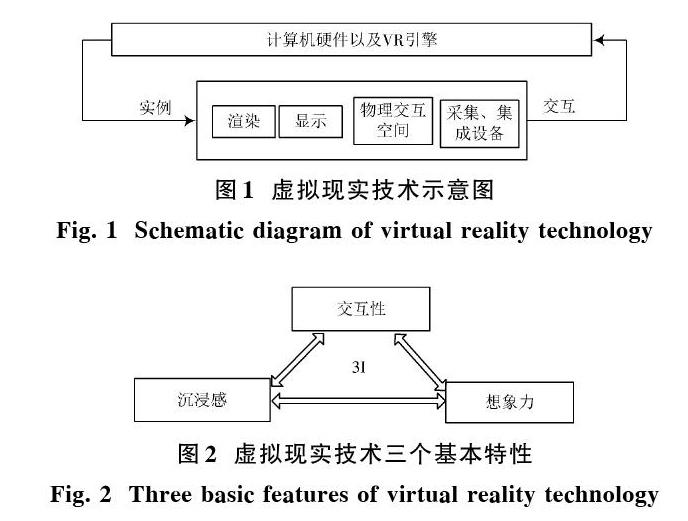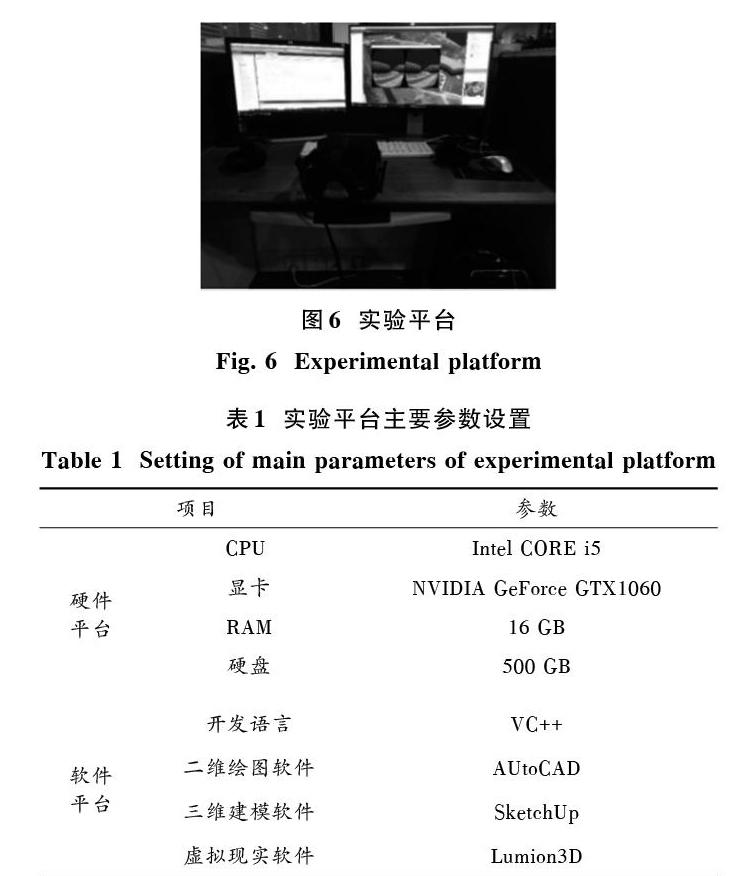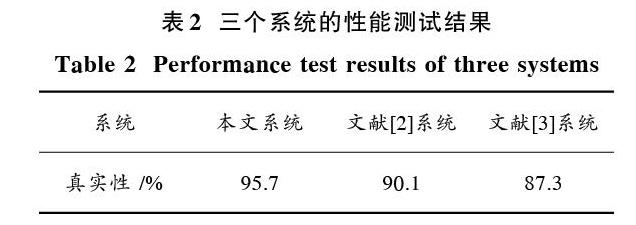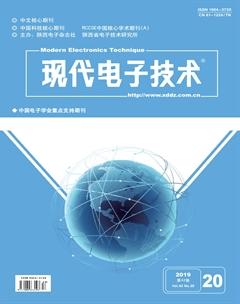基于虚拟现实技术的园林景观规划效果模拟系统设计
李喜群
摘 要: 为保证园林景观设计的合理性,对其进行规划效果模拟具有重要的现实意义。针对传统中两种园林景观规划效果模拟系统存在的问题,在虚拟现实技术的基础上设计一种新的园林景观规划效果模拟系统。该系统整体框架由用户层、应用层以及显示层三层结构组成;根据系统框架结构选用采集设备、主控设备、输出及显示设备等硬件;根据系统框架结构设计系统软件运行主程序。经验证,利用基于虚拟现实技术的系统进行园林景观规划效果模拟,真实感达到95%以上,要比传统系统的模拟效果好。由此可见,基于虚拟现实技术的系统性能更好。
关键词: 虚拟现实技术; 园林景观; 规划效果模拟; 系统设计; Unity3D; 性能测试
中图分类号: TN911?34; TP561 文献标识码: A 文章编号: 1004?373X(2019)20?0149?03
Design of landscape planning effect simulation system based on virtual reality technology
LI Xiqun
(Hunan University of Humanities, Science and Technology, Loudi 417000, China)
Abstract: In order to ensure the rationality of garden landscape design, it is of great practical significance to simulate the effect of landscape planning. A new simulation system of garden landscape planning effect is designed based on virtual reality technology to solve the problems existing in two landscape planning effect simulation systems proposed in tradition system. The whole system framework is composed of three layers: user layer, application layer and display layer. Acquisition equipment, main control equipment, output device and display device are selected according to the system framework structure. The system software running main program is designed also according to the system framework structure. The verification results prove that the landscape planning simulation effect (realistic sense) of the system based on virtual reality technology is more than 95%, which is better than that of tradition system. Thus, the system performance based on virtual reality technology is better.
Keywords: virtual reality technology; garden landscape; planning effect simulation; system design; Unity3D; performance testing
隨着国民经济的发展,现代化的大都市逐渐形成。与此同时,人们的生活节奏加快,精神世界受到影响,优质的自然环境建设可以缓解城市人民的精神压力。园林景观是现代化城市的重要组成部分[1],对园林景观规划进行效果模拟具有重要的现实意义。本次针对文献[2]和文献[3]中园林景观规划模拟效果差的问题,基于虚拟现实技术设计一种新的园林景观规划效果模拟系统。该系统分为四个部分:第一,设计系统整体组成框架;第二,选择系统组成硬件;第三,模拟软件运行程序;第四,系统仿真实验,验证系统设计的有效性。结果表明,本系统真实感达到95%以上,系统性能更好,更能有效辅助园林景观建设工作 [4]。
1 基于VR的园林景观规划效果模拟系统
利用计算机来产生一个三度空间的虚拟世界[5]。图1为虚拟现实技术原理示意图。从图1中可以归纳出虚拟现实技术的交互性、沉浸感以及想象力三个基本特性,见图2。
1) 交互性:用户输入相关指令操作计算机构建虚拟场景,计算机完成场景模拟并将结果反馈给用户。
2) 沉浸感:又称为参与感,指用户在构建的虚拟场景中感官感觉到真实程度[6]。
3) 想象力:是指当用户置身虚拟场景中,通过判断、想象等思维过程产生对虚拟场景的想象力。

1.1 系统整体框架
高质量的虚拟现实系统需要各项技术的参与。本次研究的基于VR技术的园林景观规划效果模拟系统主要由三层结构组成,如图3所示[7]。

1) 用户层:为用户提供输入指令窗口,并将指令传递给计算机,指挥计算机模拟园林景观。
2) 应用层:按照指令生成三维园林景观图像[8]。
3) 显示层:将生成的园林景观图像反馈给用户。
1.2 系統硬件设计
根据上述系统整体框架组成,系统硬件主要包括采集设备、主控设备、输出及显示设备等。
1) 输入设备
园林景观规划的首要环节是三维建模,其需要大量数据,因此需要数据信息采集设备。
激光雷达是以发射激光束到地面,然后根据反射回来的激光束,利用脉冲测距法得到地形地貌等情况[9]。脉冲测距法原理公式如下:
传感器能够感受到被测量目标的相关信息,并将其转换为可用信号,如图4所示。

2) 主控设备
主控设备是核心硬件,在相关数据采集之后,将数据传输到主控芯片当中,并利用完成园林景观三维建模。选用ATMEL公司的AVR 单片机作为系统控制器[10]。
3) 输出及显示设备
输出设备是进行园林景观规划效果感受的设备,主要包括立体眼镜、立体声耳机等。
1.3 系统软件设计
根据系统框架,设计园林景观规划效果模拟系统软件运行程序,如图5所示。

主程序运行流程:首先采集数据,然后利用无线传输设备传输到计算机。在计算机中运行程序代码,处理后,运用处理好数据和图像生成三维立体园林景观。最后将生成效果模拟图像传输到输出及显示设备当中,以便用户进行效果体验[11]。
2 系统性能测试
园林景观规划模拟最理想的效果是使得用户无法分辨出是否为虚拟场景。然而,目前无法达到100%相同。本次系统仿真测试就围绕该目标进行。
首先构建实验平台见图6,其主要参数设置如表1所示。


从表2中可知,本系统模拟真实性达到95.7%,而文献[2]和文献[3]分别为90.1%和87.3%。可知,本系统的模拟水平要高于文献[2]和文献[3]系统。
3 结 语
园林景观在城市建设中有重要作用,对其进行园林景观规划效果模拟十分必要。为此,设计一个基于虚拟现实技术的园林景观规划效果模拟系统,来提高系统模拟的真实性,为园林设计和建设提供重要的参考,同时节省了大量的人力、物力。
参考文献
[1] 宋扬.虚拟现实技术在园林绿化设计中的应用[J].浙江林业科技,2015(4):92?96.
SONG Yang. Application of virtual reality technology in landscape greening design [J]. Zhejiang forestry science and technology, 2015(4): 92?96.
[2] 高阳林,于璐.基于Unity3D的园林景观虚拟现实技术研究与系统开发[J].广东轻工职业技术学院学报,2017,16(1):6?10.
GAO Yanglin, YU Lu. Research and system development of virtual reality technology for landscape architecture based on Unity3D [J]. Journal of Guangdong Light Industry Vocational and Technical College, 2017, 16(1): 6?10.
[3] 朱子君,张玉龙,崔玲玲.基于BIM技术的大型建筑景观三维仿真系统设计与实现[J].现代电子技术,2017,40(4):111?114.
ZHU Zijun, ZHANG Yulong, CUI Lingling. Design and implementation of large building landscape 3D simulation system based on BIM technology [J]. Modern electronic technology, 2017, 40(4): 111?114.
[4] 顾语琪,孔鑫,李彦雪.基于虚拟现实技术的校园3D漫游系统研究[J].山西建筑,2018,44(13):264?265.
GU Yuqi, KONG Xin, LI Yanxue. Research on campus 3D roaming system based on virtual reality technology [J]. Shanxi architecture, 2018, 44 (13): 264?265.
[5] 尹娟,李君茹.基于虚拟现实技术的园林景观设计研究[J].中国园艺文摘,2015(7):121?123.
YIN Juan, LI Junru. Research on landscape design based on virtual reality technology [J]. Chinese horticultural abstracts, 2015 (7): 121?123.
[6] 王嘉宁,王策. 虚拟现实(VR)在园林景观设计中的应用[J].天津农业科学,2017,23(3):103?105.
WANG Jianing, WANG Ce. Application of virtual reality (VR) in landscape architecture [J]. Tianjin agricultural science, 2017, 23 (3): 103?105.
[7] 王长柳,麦贤敏,赵兵,等.风景园林合理分布三维图像仿真系统设计[J].计算机仿真,2017,34(8):265?268.
WANG Changliu, MAI Xianmin, ZHAO Bing, et al. Design of three?dimensional image simulation system for rational distribution of landscape architecture [J]. Computer simulation, 2017, 34(8): 265?268.
[8] 储晓雷,李丹,李宏力.基于SuperMap的城市园林绿化管理系统设计[J].交通科技与经济,2017,19(4):68?72.
CHU Xiaolei, LI Dan, LI Hongli. Design of urban landscape greening management system based on super map [J]. Transportation science, technology and economy, 2017, 19 (4): 68?72.
[9] 张瑞超,张一丁.在园林景观中导视系统设计的应用与研究:以苏州园林为例[J].西北林学院学报,2015,30(1):281?284.
ZHANG Ruichao, ZHANG Yiding. Application and research of guidance system design in landscape architecture: taking suzhou landscape architecture as an example [J]. Journal of Northwest Forestry College, 2015, 30 (1): 281?284.
[10] 刘明.基于虚拟现实技术的虚拟校园系统设计与实现[J].中国新通信,2017,19(22):61?62.
LIU Ming. Design and implementation of virtual campus system based on virtual reality technology [J]. China new communications, 2017, 19(22): 61?62.
[11] 郭雨.虚拟现实技术在园林景观设计教学中的应用与效果分析[J].美术教育研究,2016(10):121.
GUO Yu. Application and effect analysis of virtual reality technology in landscape design teaching [J]. Research on art education, 2016(10): 121.
[12] 上官大堰,丁禹懿,陈欣然.虚拟现实技术在园林景观视觉设计中的运用[J].艺术教育,2016(6):188?189.
SHANGGUAN Dayan, DING Yuyi, CHEN Xinran. Application of virtual reality technology in visual design of landscape [J]. Art education, 2016(6): 188?189.

